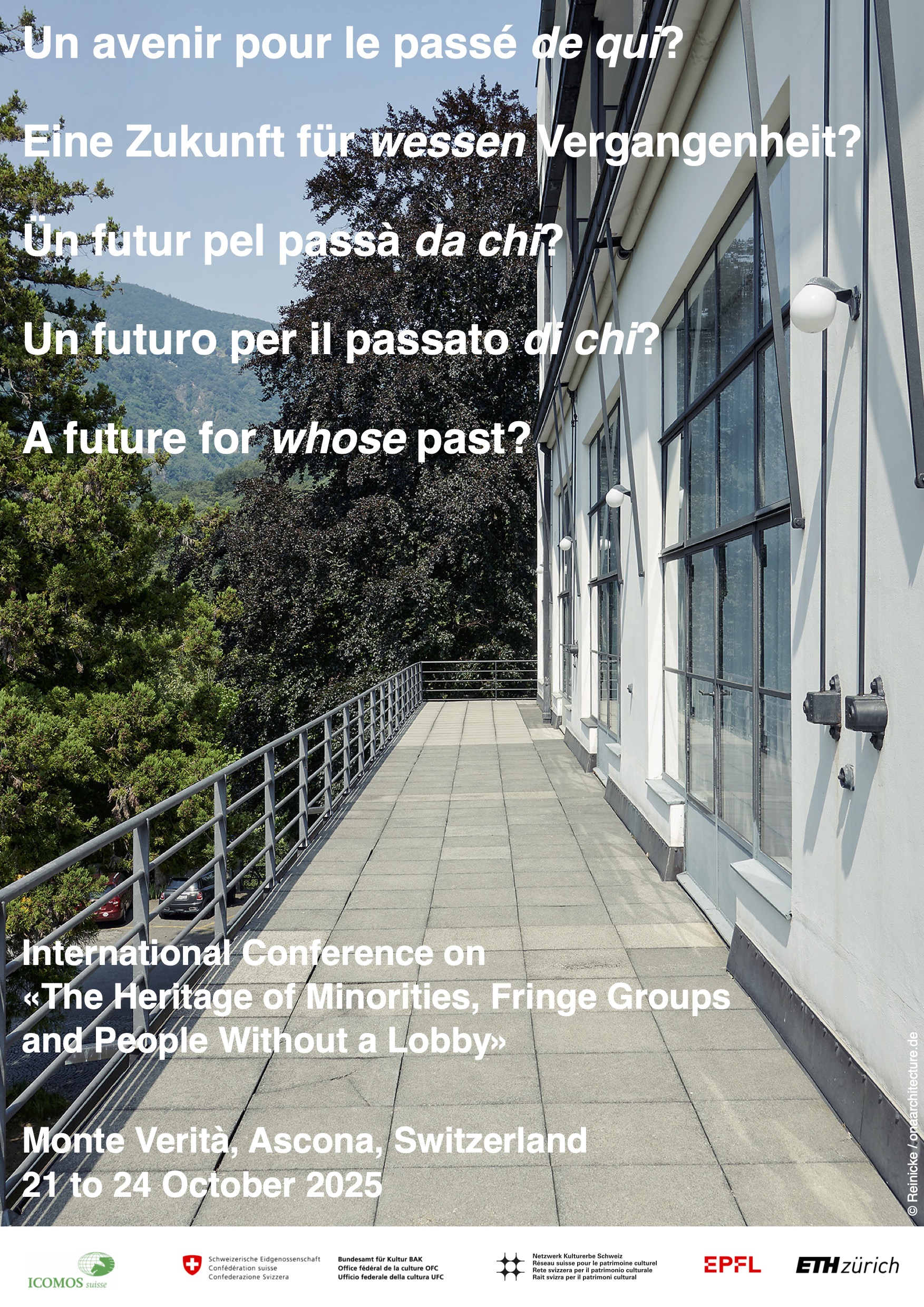
A FUTURE FOR WHOSE PAST? THE HERITAGE OF MINORITIES, FRINGE GROUPS AND PEOPLE WITHOUT A LOBBY
INTERNATIONAL AND INTERDISCIPLINARY CONFERENCE AT MONTE VERITÀ, ASCONA, SWITZERLAND
21.10 TO 24.10.2025
The motto of the European Heritage Year 1975 was “A future for our past”. 50 years later, in view of the consequences of globalisation, migration, communication technology revolutions and civil and human rights activism, the question arises as to who is actually meant by “us”. After all, the question of who belongs to society is not answered by the fact that a society claims to be pluralistic and is undergoing an accelerated process of diversification. There is no self-perpetuating trend towards greater social tolerance and openness, as can be seen from the recent rise of right-wing nationalist parties and populist campaigns against immigrants throughout the Global North. Rather, the question of belonging is a continuous process of negotiation in which the boundaries of what is considered as acceptable diversity constantly shifts – largely by determining which history should be remembered and whose cultural heritage should be protected.
Against this background, the questions arise: How do specific knowledge and legal regimes determine what is recognised as culture deserving of protection and which conditions have contributed to the formation of such determination? Who does institutional monument preservation already unconsciously or consciously exclude today when developing the basis for determining whose heritage should be preserved in the future? What roles do associations, or professional organisations play in this context? Would it be possible to conceive and practice monument preservation in a more inclusive way from the perspective of those who have not been considered so far? Debates on the significance of intangible values that have received little attention to date for the assessment of material cultural assets and the relationship between the preservation and adaptation of architectural heritage are already moving in this direction. They have expanded the concept of heritage to include the architectural testimonies of indigenous peoples, for example, opened it up to areas beyond Europe and sensitised people to the inclusion of changing framework conditions. However, these considerations do not yet centre on the preservation-related and social logics of exclusion and inclusion themselves. When minorities, marginalized groups and people without a lobby designate places that are linked to key experiences that shape their lives in the majority, which monuments become the focus of attention? What new concepts are needed to integrate the relevant interweaving of personal memory and publicly visible traces into the concept of a monument? And what other approaches to conservation could be developed to make these concepts actionable? Would this discourse allow us to extrapolate perspectives for dealing with the heritage of future minorities?
The interdisciplinary conference “A Future for whose Past? The Heritage of Minorities, Fringe Groups and People Without a Lobby” is dedicated to these questions. The event will take place from 21 to 24 October 2025 on the occasion of the 50th anniversary of the European Architectural Heritage Year. The conference is jointly organised by the ICOMOS working group “Architectural Heritage Year 2025”, ETH Zurich and EPFL, and the National Information Centre for Cultural Heritage (NIKE) (from March 2025 onwards Swiss Cultural Heritage Network). The aim of the conference is to promote a deeper exchange between science and practice and to create a wide range of networking opportunities between the two areas. The conference venue is the Congressi Stefano Franscini conference centre on Monte Verità.
Contact: denkmalschutzjahr2025@arch.ethz.ch
Scientific Committee (Peer Reviewers)
Riin Alatalu
Clara Arokiasamy
Christian Auf der Maur
Tom Avermaete
Simon Berger
Monica Bilfinger
Nicola Braghieri
Patrick Cassitti
Albina Cereghetti
Kenny R. Cupers
Rune Frandsen
Sebastian Geisseler
Francesca Gemnetti
Florence Graezer Bideau
Shen He
Stephanie Herold
Wolfram Höhne
Nina Hüppi
Mariam Issoufou
Giacinta Jean
Maria Kouvari
Gerold Kunz
Torsten Lange
Reto Marti
Hans-Rudolf Meier
Maria Portmann
Brigitte Röder
Sauter Sauter
Daniela Spiegel
Paolo Tombesi
Philip Ursprung
Cecile Vilas
Willi Wotreng
Stefan Wülfert
Helen Wyss
Heinzpeter Znoj
Image: Monte Verità, Ascona. © Reinicke / onarchitecture.de




